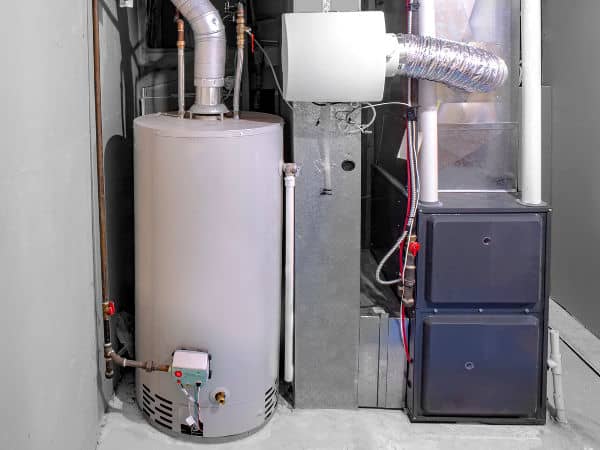How do you feel about Tips on Maintaining a Water Heater?
:max_bytes(150000):strip_icc()/tankless-hot-water-system-in-the-basement-of-a-green-technology-home-529577258-77afda16fd494c6899a78000888c3204.jpg)
Warm water is necessary for everyday comfort, whether it's for a revitalizing shower or washing dishes. To guarantee your hot water system runs efficiently and lasts much longer, routine maintenance is vital. This post provides functional tips and understandings on how to preserve your home's hot water system to prevent disruptions and expensive fixings.
Introduction
Keeping your home's hot water system could appear challenging, yet with a few simple actions, you can ensure it runs smoothly for several years to find. This guide covers whatever from understanding your warm water system to DIY upkeep suggestions and recognizing when to contact professional assistance.
Importance of Keeping Your Hot Water System
Normal maintenance not just extends the life expectancy of your warm water system but also guarantees it runs efficiently. Ignoring upkeep can bring about lowered efficiency, higher power bills, and also premature failure of the system.
Indicators Your Hot Water System Requirements Upkeep
Knowing when your hot water system needs interest can protect against major issues. Keep an eye out for signs such as inconsistent water temperature level, unusual sounds from the heater, or rustic water.
Purging the Hot Water Heater
Flushing your hot water heater gets rid of sediment build-up, improving effectiveness and extending its life.
Monitoring and Replacing Anode Rods
Anode rods protect against corrosion inside the storage tank. Checking and replacing them when broken is critical.
Facility Issues Requiring Professional Assistance
Examples include major leaks, electrical problems, or if your water heater is constantly underperforming.
Regular Professional Maintenance Perks
Specialist upkeep can include extensive assessments, tune-ups, and making certain conformity with safety standards.
Examining and Changing Temperature Level Setups
Readjusting the temperature settings guarantees ideal performance and security.
Do It Yourself Tips for Upkeep
You can execute numerous maintenance tasks yourself to keep your hot water system in top condition.
Checking for Leaks
Frequently examine pipes and connections for leakages, as these can bring about water damages and higher expenses.
Understanding Your Hot Water System
Prior to diving right into maintenance tasks, it's valuable to comprehend the fundamental elements of your warm water system. Normally, this includes the water heater itself, pipes, anode rods, and temperature controls.
Month-to-month Upkeep Tasks
Routine monthly checks can aid catch minor concerns prior to they intensify.
Testing Stress Relief Valves
Evaluating the pressure relief valve guarantees it operates appropriately and stops extreme pressure buildup.
Insulating Pipes
Shielding warm water pipelines decreases heat loss and can save power.
When to Call a Specialist
While DIY maintenance is beneficial, some problems require professional expertise.
Final thought
Routine maintenance of your home's warm water system is crucial for efficiency, long life, and expense financial savings. By following these pointers and understanding when to seek expert help, you can make certain a reputable supply of hot water without unexpected disturbances.
How to Maintain an Instant Hot Water Heater
Before tinkering with your hot water heater, make sure that it’s not powered on. You also have to turn off the main circuit breaker and shut off the main gas line to prevent accidents. Also turn off the water valves connected to your unit to prevent water from flowing into and out of the appliance. 2. When you’re done, you have to detach the purge valves’ caps. These look like the letter “T†and are situated on either side of the water valves. Doing so will release any pressure that has accumulated inside the valves while at the same time avoid hot water from shooting out and burning your skin. 3. When the purge valves’ caps are removed, you have to connect your hosing lines to the valves. Your unit should have come with three hoses but if it didn’t, you can purchase these things from any hardware or home repair shops. You can also get them from retail stores that sell water heating systems. Read the user’s manual and follow it to complete this task properly. When the hosing lines are connected, open the purge port’s valves. 4. You should never use harsh chemical cleaners or solutions when cleaning your unit. Make use of white vinegar instead. It should be undiluted and you’ll probably use about 2 gallons. 5. Now flush your water heater. This task should probably take about 40 minutes. We can’t give you specific directions for this because the procedure is carried out depending on the type, model and brand of your heater. With that being said, refer to the user’s manual. 6. When you’re done draining the unit, you have to turn off the purge port valves again. Remove the hosing lines that you earlier installed on each of the water valves. Put the valve caps (purge port) back in their respective places and be very careful so as not to damage the rubber discs that are found inside these caps. 7. Now that everything’s back in place, check your user’s manual again to find out how to reactivate your water heating system. 8. Once it is working, turn one of your hot water faucets on just to let air pass through the heater’s water supply pipes. Leave the tap on until water flows smoothly out of it. https://www.orrplumbing.com/blog/2014/september/how-to-maintain-an-instant-hot-water-heater/

Do you really like more info about Water Heater Maintenance Tips You Can't Afford to Forget? Leave a review directly below. We'd be happy to hear your suggestions about this article. We hope that you visit us again in the future. Sharing is caring. Helping others is fun. Many thanks for going through it.
Schedule Free Estimate